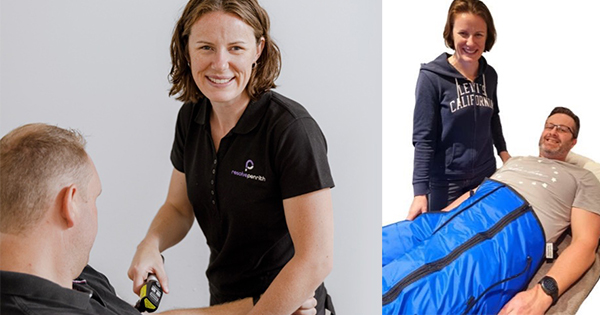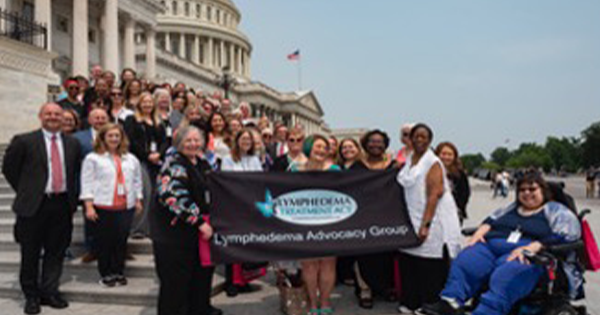Digital accessibility is a fundamental principle of contemporary healthcare especially as digital communication, through using the internet, has become a primary tool for communicating and engaging patients (Polukhin et al, 2023). According to the International Organization for Standardization (ISO, 2021): “Over a billion people around the world have some form of disability, so ensuring products, services and environments are accessible to everyone is fundamental to human rights.”
Digital accessibility is the practice of designing and developing digital content and technology, such as websites, online courses, software applications, digital documents, and multimedia content, so that it is accessible and usable by all users, regardless of ability and environment. Digital accessibility involves the elimination of barriers that prevent people from accessing and using digital content and technology.
According to the Digital Transformation Agency of the Australian Government (2017): “You need to make sure everyone who needs your service can use it. This includes people with disability and older people, and people who can’t use, or struggle with, digital services. Your service must be accessible to users regardless of their digital confidence and access to a digital environment. This includes users in remote areas and users with different devices.”
Digital accessibility involves a wide range of considerations, including:
- Providing alternative text (Alt Text) descriptions for visual content, such as images and videos, for people who are blind or have low vision.
- Ensuring that web content and software can be accessed using keyboard navigation for people who cannot use a mouse.
- Providing captions and transcripts for audio and video content for people who are deaf or hard of hearing.
- Provide audio descriptions for video content.
- Using colour contrast and other design techniques to make content more readable for people with visual impairments.
- Ensuring technology is compatible with assistive technologies, such as screen readers and text-to-speech software.
What are the standards for digital accessibility in Australia?
According to the Australian Human Rights Commission (2014): “One in five Australians has a disability, and the proportion is growing. The full and independent participation by people with a disability in web-based communication and online information delivery not only makes good business and marketing sense but is also consistent with our society’s obligations to remove discrimination and promote human rights.”
Under Australian federal legislation of the Disability Discrimination Act of 1992, it is a legal requirement to make sure services are accessible and usable for people with disabilities. Government agencies in Australia must also adhere to the Web Content Accessibility Guidelines (WCAG) 2.1 (World Wide Web Consortium, 2018).
The WCAG 2.1 provides a set of technical and non-technical guidelines for making digital content accessible to people with disabilities, including those with visual, auditory, physical, speech, cognitive and neurological disabilities. The guidelines are organised into four principles:
- Perceivable – this means that users must be able to perceive the information being presented and it must not be invisible to all senses.
- Operable – this means that users must be able to operate the interface and the interface cannot require interaction that a user cannot perform.
- Understandable – this means that users must be able to understand the information as well as the operation of the user interface. Therefore, the content or operation cannot be beyond understanding.
- Robust – this means that the content must be interpreted reliably by a wide variety of user agents, including assistive technologies.
Lessons learned from the lymphoedema training programme
Kate Murdoch is an experience remedial massage therapist and has worked for more than six years in massage therapy. Kate owns a successful private practice, Resolve Penrith, in New South Wales, Australia [Figure 1]. She is blind and is an advocate for accessibility with past workplace experience including working for NSW Health, for 14 years, with diversity and inclusion as focus areas.
In 2022, Kate undertook an Australasian Lymphology Association accredited course to become an accredited lymphoedema practitioner in the Casley-Smith method (CANpractice, Australian Institute of Lymphoedema). The course involved a month of self-directed online learning through a learning management system, four virtual classroom sessions via a video conferencing product (Zoom Video Communications, San Jose, California, US) and a week of practical, face-to-face training in Sydney, Australia.
Some of the lessons learned during the lymphoedema training programme from an accessibility perspective included the following.
The online learning content needed to be accessible through the learning management system. This was addressed by ensuring that text copying was enabled to allow for screen reading technology to scan the words. Free access to the online portal was allowed to test the suitability of Kate’s screen reader prior to enrolling in the course.
In the design of the course content, Andrea Mangion had ensured that videos were accompanied by a transcript and that Alt Text image descriptions were completed on figures and images.
Resources usually provided in printed form needed to be provided in electronic format. This allowed Kate’s screen reader to detect the content.
There was a need for continuous evaluation of the practicability of course components given that there were no prior publications that could be sourced on the topic.
Overall, Kate excelled in the course. She demonstrated high levels of competence in lymphatic drainage and compression bandaging, when compared to her peers, which was likely due to the skills being highly assisted through tactile feedback.
The most challenging tasks were circumferential measures and garment prescription, given that these tasks rely heavily on visual cues and an ability to read the measurements from the tape measure at the required measurement points. Kate used silicon dots to provide tactile feedback of where the required measurement points were. She used a Braille tape measure to read the circumferential measurements.
Additional support was appropriate throughout the course. Kate was able to bring Wylie, her black Labrador and accredited guide dog [Figure 2].
Kate was accompanied by an experienced support worker, John, who attended for the entire week [Figure 3].
Anne, a registered nurse and lymphoedema trainer, also attended the course to provide additional support and further verbal instructions, as well as tactile feedback in the practical sessions.
Potential solutions for improving accessibility and inclusion
Some solutions for improving accessibility and inclusion in lymphoedema training courses are outlined below.
Following accessibility standards when authoring and deploying online learning
Screen readers should be enabled, images and figures should have Alt Text descriptions completed, and videos should include transcriptions and detailed descriptions of practical tasks as well as audio descriptions. Allowing additional time for students to undertake online learning may be helpful.
Solutions for printed material
Blind students may not be able to access printed material, such as handouts, textbooks and course readings. Alternative formats, such as Braille, large print or electronic formats, may be required.
Access to visual content
Blind students may not be able to access visual content, such as videos, images and diagrams, that are presented in class. Audio descriptions or tactile graphics may be needed to provide equal access to this content.
Navigation and mobility
Blind students may face difficulties navigating the physical space of the classroom, locating classrooms, and finding their way around. The use of tactile paving, clear signage, assistive technology, support/guide animals and support staff can be helpful.
Visual aids
Blind students may not be able to see visual aids such as whiteboards, chalkboards, and overhead projectors. Alternative options, such as audio descriptions, can be used to provide equal access to this content. Assistive apps, such as text-to-speech applications, can also be used.
Practical lymphoedema tasks
Tape measures that include Braille may assist with circumferential measures. While not suitable in courses (due to the weight and expense), solutions for use in the clinic, such as perometry and 3D scanners, may be suitable alternatives to using a tape measure for circumferential and garment measures. Technology that allows practitioners to measure patients independently and accurately will assist in providing high standards of reliable clinical care.
Allowing further practice time
Additional time allocated to practise skills may be required.
Allowing time to debrief and manage fatigue
For all healthcare practitioners, regardless of ability, undertaking lymphoedema training can be tiring. Time to debrief after the end of the day and having strategies to allow for rest during the programmes may be beneficial.
Support staff and animals
Support staff and animals should be encouraged to attend courses. Having a support healthcare professional who can provide additional auditory and tactile feedback may be beneficial.
Encouraging use of supportive professional networks
Upon finishing initial accreditation training, next steps for Kate include consideration of ongoing training through continuous professional development and being involved in supportive peer networks. Continuing education is essential in the field of lymphology to ensure that Kate stays up to date with the latest techniques and technologies. Furthermore, actively participating in peer networks that consist of other healthcare professionals who share the same level of enthusiasm for lymphoedema can offer reciprocal assistance and facilitate the exchange of practical strategies.
Conclusion
Although lymphoedema training requires a high level of practical proficiency in demanding tasks, such as compression bandaging, it can be completed by blind healthcare professionals who are proficient in remedial massage prior to attendance.
Accessibility factors should not discourage healthcare professionals from pursuing training in this specialised field.
Further research is required into digital accessibility in healthcare and how both training and lymphoedema clinical practice can be enhanced, regardless of ability or environment.





